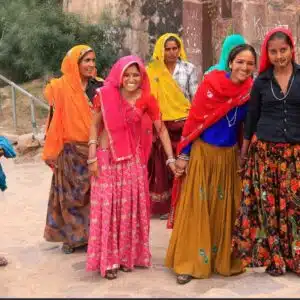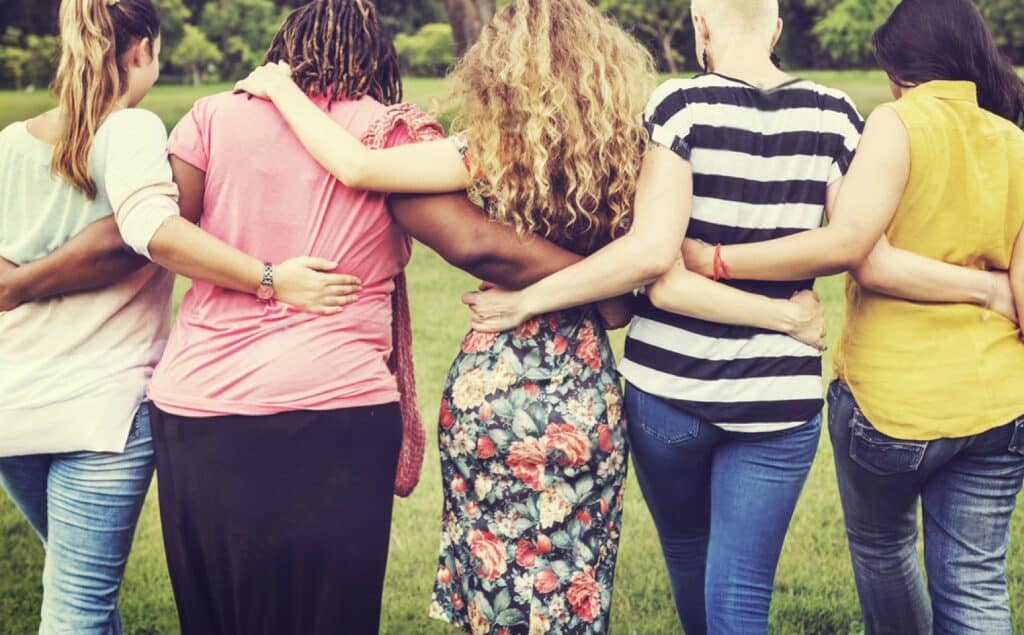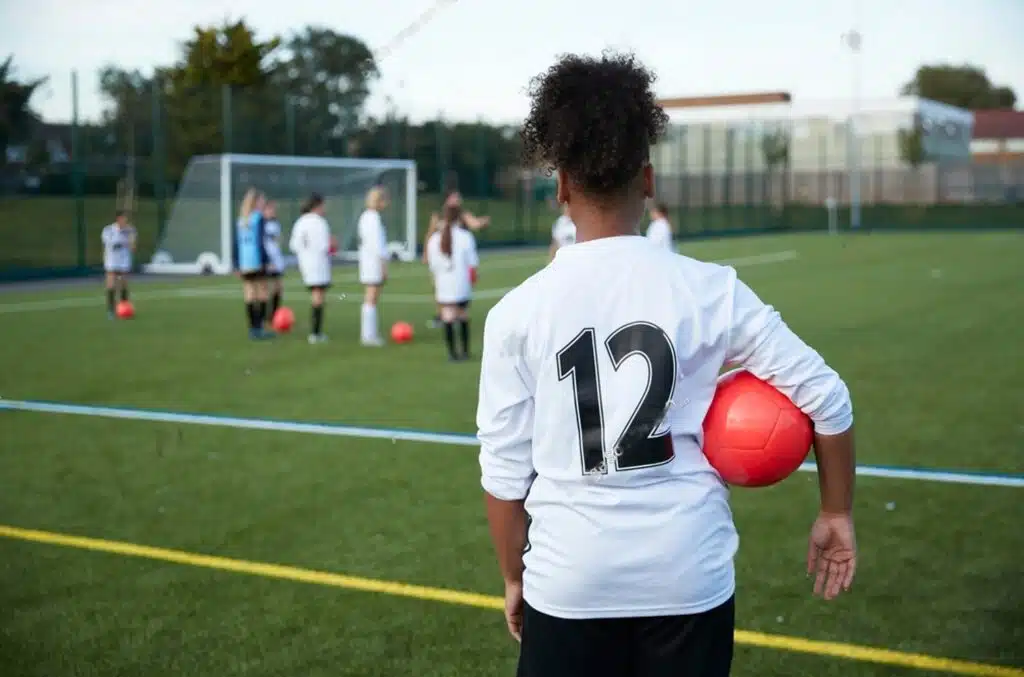
Essay on Status of Women in India – Introduction
India is a country known for its vibrant culture, diverse traditions, and rich heritage. However, if we take a closer look at the status of women in India throughout history, the picture is not always so colourful.
Despite being recognized as goddesses in Hindu mythology and revered for their nurturing qualities, Indian women have faced discrimination and oppression for centuries. But things are changing rapidly now – with the evolution of rights and the breaking of barriers by women across different fields.
Through this essay on status of women in India let’s explore the journey of women’s development in India over time, highlighting both challenges and progress along the way!
The Status of Women in India Throughout History
Throughout history, the status of women in India has been a complex issue. In ancient times, women were revered for their strength and wisdom, with prominent female figures such as Draupadi and Sita being celebrated in religious texts. However, over time, patriarchal norms began to take hold, leading to the marginalization and oppression of women.
During colonial rule, Indian women faced further discrimination as the British system enforced strict gender roles and limited opportunities for education and employment. It wasn’t until the rise of the feminist movement in the mid-20th century that significant progress was made towards attaining equal rights for women.
Despite these advancements, there are still major challenges facing women in India today. Gender-based violence continues to be prevalent across all levels of society while access to education and healthcare remains limited for many girls and women.
It is important to recognize both the historical context surrounding issues affecting Indian women today as well as current cultural attitudes toward gender roles if we hope to create positive change moving forward.
Also Read:
- Speech about Women Empowerment
- Amazing Paragraph on Women’s Empowerment Ideas
- Amazing Short Paragraph on Women Empowerment
- Amazing Paragraph on Women’s Empowerment
- Amazing A Paragraph on Women Empowerment
The Status of Women in India
The status of women in India has been a topic of discussion for decades. Women have played an important role in shaping the cultural, social and economic fabric of India since ancient times. However, despite their contributions, women have faced discrimination and inequality throughout history.
In traditional Indian society, men were considered superior to women and women’s roles were confined to domestic duties. This patriarchal mindset has persisted through the ages and still remains prevalent today.
Although there have been significant improvements over time, gender inequality remains a major issue in contemporary India. Women face various challenges such as unequal pay, limited employment opportunities and inadequate representation in political decision-making bodies.
Despite these challenges, many Indian women have broken barriers to achieving success on their own terms. From Kalpana Chawla who became the first Indian woman astronaut to Sunita Williams who holds several spacewalk records; from Kiran Bedi who was India’s first female police officer to Sania Mirza who is one of the world’s most successful tennis players – Indian women are making strides in diverse fields.
While there have certainly been positive changes made for the betterment of women’s rights in recent years such as legal protection against sexual harassment at work or educational scholarships reserved specifically for girls – much more must be done if we want true gender equality across all sectors within our country.

The Evolution of Rights for Women in India
The evolution of women’s rights in India is a fascinating and complex topic. Women in India have been fighting for equality and basic human rights for centuries, with the progress made through various movements throughout history.
One of the earliest documented movements was the social reform movement led by Raja Ram Mohan Roy in the early 19th century, which aimed to abolish practices like sati (widow burning) and child marriage. This eventually paved the way for more progressive reforms such as education for girls.
In 1917, the All India Women’s Conference was established to advocate for women’s rights at all levels of society. The conference played a crucial role in pushing for legislative changes that granted women greater legal protections and political representation.
Following independence from British colonial rule, significant strides were made towards gender equality with the introduction of laws such as The Hindu Marriage Act (1955), which gave women more control over their personal lives and property ownership.
Despite these advancements, there are still many challenges that Indian women face today including domestic violence, sexual harassment, and lack of access to education and healthcare among others. However, ongoing advocacy efforts continue to push towards greater gender equity and empowerment.

The barriers Women Face in India
Despite the significant progress made in women’s rights in India, there are still several barriers that prevent women from achieving true equality. One of the primary obstacles is gender-based violence, which affects millions of Indian women every year.
Access to Education-
Another barrier is access to education and employment opportunities. Despite laws prohibiting discrimination against women in these areas, many employers and educational institutions continue to favour men over equally qualified female candidates.
Challenging Traditional Gender Roles
Traditional gender roles deeply influence Indian society, leading to the belief that a woman’s primary place is within the home. This mindset creates challenges for women who aspire to pursue careers outside of traditionally female-dominated fields or who wish to live independently. Breaking free from these stereotypes is essential to empower women and enable them to explore diverse career paths and make choices based on their aspirations and capabilities.
Torture due to poverty-
Poverty remains a significant barrier for many Indian women, particularly in rural areas. Limited access to basic resources like clean water, healthcare, and economic opportunities restricts their ability to fully participate in society. Empowering women economically and providing them with access to essential resources is crucial for their independence and overall well-being.
Continuing the Journey Towards Gender Equality
While progress has been made towards gender equality in India, there is still work to be done. It is important to acknowledge and address the barriers that hinder women’s full participation in society. By promoting gender equality in all aspects of life and implementing policies that empower women, we can create a society where women have equal opportunities, rights, and access to resources. Together, we can continue the journey towards achieving true gender equality in India.
Women who have Broken Barriers in India
India has witnessed many inspiring women who have broken barriers and achieved great accomplishments.
Mary Kom- Among them is Mary Kom, a five-time world boxing champion who faced challenges due to societal beliefs about female athletes. She defied the odds and became an icon in India’s sports history.
Kiran Bedi- Another remarkable woman is Kiran Bedi, India’s first female police officer. Despite facing discrimination and resistance from her male colleagues, Bedi rose to become one of the most respected officers in the country.
Sania Mirza- She stands as a symbol of empowerment for Indian women in sports. She broke stereotypes as a Muslim woman by becoming one of the most successful tennis players in India’s history.
Indra Nooyi- Former CEO of PepsiCo, also shattered glass ceilings by becoming one of the top business leaders globally despite facing gender-based discrimination during her career journey.
These women serve as role models for future generations of Indian girls aspiring to break through societal norms that limit their potential. Their stories inspire us all to keep pushing boundaries and fighting for equality regardless of gender or background.
Breaking Barriers – Women in India Today
Today, women in India are breaking barriers and achieving milestones that were once thought impossible. From the fields of politics and business to entertainment and sports, Indian women have proven their mettle time and again.
One such example is Mary Kom, who defied all odds to become a world champion boxer. She managed to achieve her goals despite belonging to an economically backward region of Manipur where opportunities for girls are limited.
Another inspiring example is Arundhati Bhattacharya, who became the first female Chairman of State Bank of India (SBI), one of the largest banks in the country. Her appointment broke a glass ceiling in banking which was traditionally a male-dominated field.
Women like these have shown that with determination, hard work, and perseverance anything is possible. They serve as role models for young girls across the country who dream big but face societal pressure and gender biases.
Moreover, today’s generation has more access to education than ever before which has opened up numerous avenues for them. Women are now entering into fields such as science and technology where they were previously underrepresented.
Indian women today are proving themselves every day by breaking barriers that held them back from achieving their true potential. Their grit and resilience provide hope for future generations that no obstacle can be too big if you set your mind on overcoming it.

The Future for Women in India
The future for women in India looks promising but there are still many obstacles to overcome. Despite the progress made in recent years, gender inequality remains a significant issue in India.
One of the biggest challenges facing women is access to education and employment opportunities. Many girls still drop out of school early or are denied education altogether due to traditional beliefs that prioritize male education over female education.
Additionally, violence against women continues to be a major concern in India. Sexual assault and harassment remain prevalent issues, often perpetuated by cultural attitudes that blame the victim rather than hold perpetrators accountable.
However, there are reasons for optimism as well. Women’s rights organizations have been active in promoting change and advocating for policy reforms that address gender disparities.
Furthermore, more and more women are breaking barriers and achieving success across all sectors including politics, business, sports and entertainment. These role models inspire other young girls to pursue their dreams without fear of judgment or discrimination.
While there is still much work to be done towards achieving true gender equality in India, it is clear that progress has been made and will continue to happen as long as people keep pushing forward with passion and determination.”
The Evolution of Women’s Rights in India
India has come a long way in terms of women’s rights. In the early days, women had almost no rights and were seen as inferior to men. However, over time, the situation has improved significantly. Women now have more opportunities for education, employment and political representation.
The evolution of women’s rights in India can be traced back to various movements such as the White Ribbon Movement that took place during British rule. The movement fought against child marriage and widow remarriage. Later on, in 1917, feminist groups like the All India Women’s Conference formed with the aim of advancing women’s interests.
In 1975, under pressure from feminist groups across India, the government passed a bill giving Hindu widows equal inheritance rights with male heirs which was earlier denied by societal norms and customs.
The Indian Constitution also plays an important role in securing gender equality through provisions such as prohibiting discrimination based on sex and reserving seats for women in local bodies such as panchayats or village councils.
Despite this progress, there are still many challenges faced by Indian women including violence against them particularly within their homes called domestic violence which is still prevalent today. Discrimination continues to exist especially when it comes to job opportunities where men tend to earn more than their female counterparts.
Although significant progress has been made towards gender equality there is still much work that needs to be done if we want a truly just society that values everyone equally regardless of their gender identity or expression
Conclusion
The status of women in India has come a long way since ancient times. From being considered as inferior and subordinate to men, women have fought for their rights and made significant progress in various fields.
However, despite the evolution of women’s rights in India, there are still many barriers that need to be overcome. Gender discrimination, lack of education and employment opportunities continue to hinder the progress of women in society.
Nevertheless, Indian women today are breaking barriers every day by achieving success in areas traditionally dominated by men. With increasing awareness and efforts towards gender equality, we can hope for a brighter future where women’s potential is fully realized.
It is time for us to recognize and celebrate the contribution of all the brave Indian women who have broken barriers throughout history. Let us work together towards creating an inclusive society where every woman can live with dignity and respect.